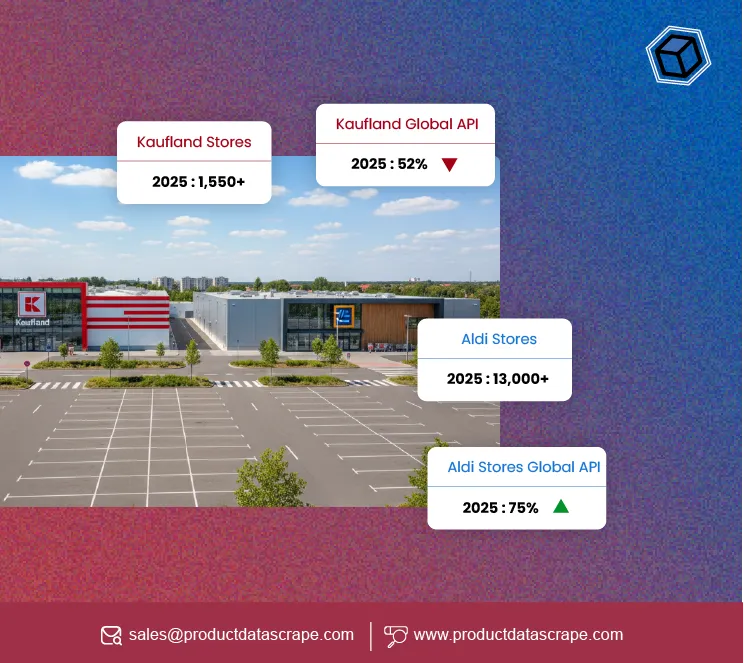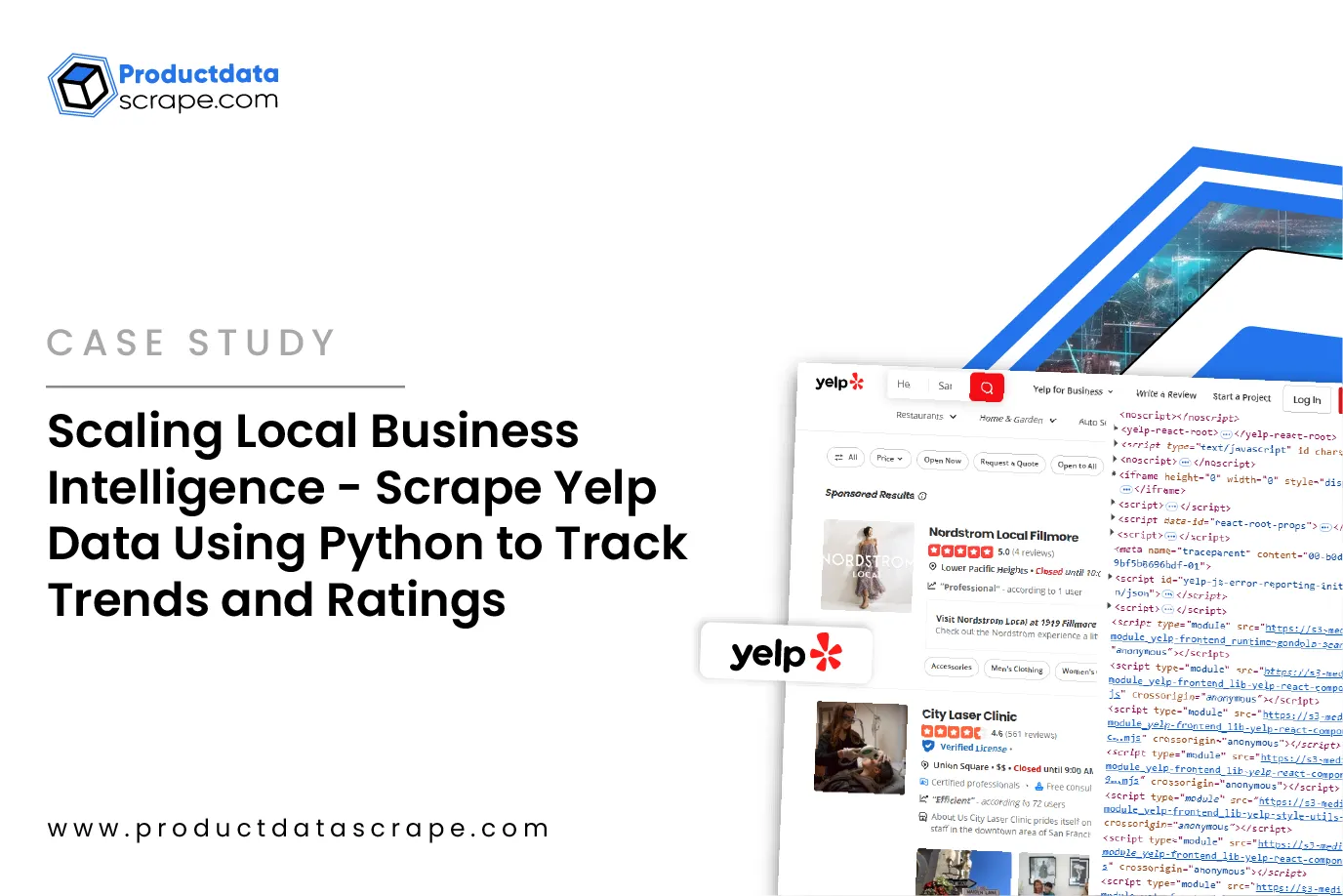
Introduction
Southeast Asia’s e-commerce market is witnessing unprecedented growth, driven by rapid digital
adoption, affordable smartphones, and a rising middle class. At the center of this boom stands
Shopee, the region’s leading e-commerce platform, which dominates online shopping across
Indonesia, Thailand, Vietnam, Malaysia, and the Philippines. For businesses, this surge presents
both opportunities and challenges—how do you track millions of products, analyze real-time
prices, and monitor consumer sentiment efficiently?
This is where a Shopee Product Data Scraping API comes into play. Instead of manually collecting
product details, prices, or reviews, an automated API enables businesses to scale data
extraction seamlessly. From Shopee product search suggestions scraping API to advanced real-time
Shopee price monitoring API Southeast Asia, companies now rely on automation to stay
competitive.
In this blog, we’ll explore how Product Data Scrape helps businesses unlock Shopee’s vast
potential using advanced scraping APIs. We’ll cover use cases, growth trends, and future
projections with statistical insights (2020–2025). Whether you want to monitor competitors,
analyze reviews, or build a Shopee E-commerce Product Dataset, leveraging APIs for Web Scraping
E-Commerce Data from Shopee can help you transform raw information into actionable business
intelligence.
Market Growth – Why Shopee Data is Critical?
Shopee has emerged as Southeast Asia’s e-commerce powerhouse, rapidly outpacing competitors like
Lazada, Tokopedia, and Bukalapak. By focusing on mobile-first shopping experiences, localized
campaigns, and aggressive discount strategies, Shopee has positioned itself as the go-to
marketplace for millions of consumers across Indonesia, Vietnam, Thailand, Malaysia, and the
Philippines. For businesses, the growth trajectory of Shopee represents an unparalleled
opportunity—but also a challenge.
The challenge lies in scale. With over 720 million active listings projected by 2025, monitoring
even a fraction of Shopee’s inventory is impossible without automation. That’s where a Shopee
Product Data Extraction API becomes indispensable. Whether you are a retailer, market research
agency, or logistics player, access to structured Shopee data provides a competitive edge in
understanding what sells, when it sells, and at what price point.
According to Google-Temasek-Bain’s 2022 Southeast Asia digital economy report, the regional
e-commerce market was valued at $120 billion in 2021 and is forecasted to hit $230 billion by
2025. Shopee’s market share has steadily increased, making it a core player in this
transformation. The following table highlights this growth trajectory.
| Year |
Total E-Commerce Market ($ Billion) |
Shopee Share (%) |
Shopee Revenue ($ Billion) |
| 2020 |
105 |
28% |
29.4 |
| 2021 |
120 |
32% |
38.4 |
| 2022 |
150 |
35% |
52.5 |
| 2023 |
175 |
37% |
64.7 |
| 2024 |
205 |
39% |
79.9 |
| 2025 |
230 |
40% |
92.0 |
This exponential rise demonstrates why integrating Web Scraping E-commerce Websites like Shopee
is now critical for strategic planning. A brand selling electronics, for instance, could track
competitor listings to adjust pricing dynamically. FMCG players might use data to monitor
fast-moving items across different geographies.
Product Data Scrape enables clients to harness this scale through its advanced Shopee Product
Data Scraping API, which automates the collection of millions of data points daily. Instead of
relying on guesswork, businesses can make decisions based on accurate, real-time insights.
The importance of Shopee data cannot be overstated—without tapping into it, brands risk falling
behind in one of the world’s fastest-growing digital economies.
Tracking Consumer Demand with Search Data
Consumer demand is constantly evolving in Southeast Asia’s digital economy. New product trends
can emerge overnight, often influenced by global pop culture, local festivals, or viral TikTok
campaigns. For businesses, the ability to anticipate these shifts before competitors can mean
the difference between record-breaking sales and unsold inventory.
One of the most powerful ways to predict demand is through search data. Using a Shopee product
search suggestions scraping API, businesses can identify what customers are searching for in
real time. For example, during the pandemic, searches for home fitness equipment surged. More
recently, categories like wireless earbuds, skincare, and eco-friendly household products have
seen consistent growth.
The numbers speak for themselves. Between 2022 and 2025, search volumes in fashion and
electronics categories have steadily increased.
| Year |
Electronics |
Fashion |
Beauty & Personal Care |
FMCG |
Home Appliances |
| 2022 |
28% |
24% |
18% |
16% |
14% |
| 2023 |
30% |
25% |
19% |
15% |
11% |
| 2024 |
32% |
26% |
20% |
14% |
8% |
| 2025 |
34% |
27% |
22% |
12% |
5% |
Take an example: a cosmetics brand analyzing search suggestions for “lipstick.” If terms like
“vegan lipstick” or “matte lipstick” trend higher, the brand can quickly update product listings
and promotions accordingly. Similarly, an electronics retailer could spot rising demand for
“budget smartphones under $200” and align inventory planning with these insights.
For developers and analysts, Shopee product data extraction using Python makes this even more
powerful. By automating scripts, businesses can collect daily search keyword volumes, segment
them by geography, and map them against sales performance. This creates a predictive model that
reduces risk and maximizes ROI on ad campaigns.
The advantage of scraping search suggestions lies in foresight. While competitors react to
consumer trends after they’ve already peaked, businesses with automated search monitoring stay a
step ahead—capitalizing on demand as it emerges. This proactive approach ensures stronger sales
performance, better ad efficiency, and smarter inventory decisions.
Unlock real-time Shopee search insights, predict trends early, and stay
ahead in Southeast Asia’s e-commerce race with Product Data Scrape!
Contact Us Today!
Real-Time Price Monitoring for Competitive Edge
Price competitiveness is one of the biggest differentiators in Southeast Asia’s e-commerce
landscape. Consumers here are highly price-sensitive, with surveys showing that over 80% of
buyers compare prices across multiple sellers before making a purchase. In this environment,
even the smallest pricing difference can make or break a sale.
Enter the real-time Shopee price monitoring API Southeast Asia. With this tool, businesses can
track competitor prices across thousands of listings and adjust their own strategies instantly.
For example, if a competitor drops the price of a smartphone model by 5%, the API can alert you,
allowing for a rapid response to protect sales volumes.
Historical pricing trends further emphasize the value of monitoring. Across 2020 to 2025,
average prices in key categories such as electronics, fashion, and beauty have consistently
dropped due to intense competition.
| Year |
Electronics Avg. Price ($) |
Fashion Avg. Price ($) |
Beauty Avg. Price ($) |
Home Appliances Avg. Price ($) |
| 2020 |
65 |
28 |
22 |
80 |
| 2021 |
63 |
26 |
21 |
78 |
| 2022 |
60 |
25 |
20 |
75 |
| 2023 |
58 |
24 |
19 |
73 |
| 2024 |
55 |
23 |
18 |
70 |
| 2025 |
52 |
22 |
17 |
68 |
For a brand, this information is invaluable. Consider a fashion retailer selling dresses. If
competitors are gradually reducing prices ahead of major campaigns like 11.11 or 12.12,
automated price monitoring can highlight these changes. Businesses can then prepare discount
campaigns without sacrificing margins.
Using tools like
Extract Shopee E-Commerce Product Data , companies can set automated alerts,
create competitive intelligence dashboards, and even integrate pricing insights into their CRM
systems. The outcome? A smarter pricing strategy that maximizes both competitiveness and
profitability.
In essence, price monitoring APIs empower businesses to remain agile in a market where consumer
loyalty is fleeting and heavily influenced by cost.
Leveraging Product Reviews for Market Insights
Customer reviews are the heartbeat of e-commerce. They influence purchasing decisions, build
brand credibility, and provide honest feedback loops for sellers. In Southeast Asia, research
indicates that 82% of shoppers consider reviews as a primary factor before purchasing a product
online.
With the help of a Shopee product reviews scraper, businesses can analyze thousands of reviews
across categories to extract valuable insights. This includes sentiment analysis, common
keywords, and product-specific complaints or praises. For example, analyzing reviews for budget
smartphones might reveal frequent mentions of “battery life” or “camera quality” as deciding
factors.
Shopee reviews data between 2022 and 2025 shows a steady improvement in sentiment, reflecting
both platform trust and seller adaptation.
| Year |
Positive Sentiment (%) |
Neutral Sentiment (%) |
Negative Sentiment (%) |
| 2022 |
72 |
15 |
13 |
| 2023 |
75 |
14 |
11 |
| 2024 |
77 |
13 |
10 |
| 2025 |
80 |
12 |
8 |
For sellers, review scraping is a goldmine of intelligence. Imagine a cosmetics brand
discovering that buyers consistently complain about “packaging damage.” By improving logistics
or packaging material, the brand reduces negative reviews, directly improving conversion rates.
Similarly, a fashion seller could identify size-related complaints and enhance sizing charts for
greater customer satisfaction.
Beyond individual businesses, review data is also valuable for investors and researchers. A
Shopee E-commerce Product
Dataset that includes review sentiment trends can help identify
strong-performing categories, rising brands, and consumer trust levels across markets.
Ultimately, leveraging review scraping shifts decision-making from assumptions to evidence.
Sellers become proactive, addressing issues before they escalate, while simultaneously doubling
down on features that customers already love.
Building Custom Datasets for E-Commerce Research
While APIs provide real-time data, many businesses need long-term, structured datasets for
deeper analysis. This is where Buy
Custom Dataset Solution offerings come in. Instead of pulling
raw data continuously, companies can purchase a curated Shopee E-commerce Product Dataset that
covers historical data, product listings, reviews, and pricing trends.
Such datasets are invaluable for research firms, market analysts, and investors. They allow
stakeholders to understand not just what is happening now, but how trends have evolved over
time. For example, datasets can reveal how certain categories perform during seasonal campaigns,
or how consumer demand shifted from luxury items to essentials during economic downturns.
The scale of Shopee’s dataset growth is massive.
| Year |
Active Listings (Million) |
Sellers Onboarded (Million) |
Dataset Size (TB) |
| 2020 |
350 |
1.5 |
20 |
| 2021 |
420 |
2.0 |
28 |
| 2022 |
500 |
2.6 |
36 |
| 2023 |
570 |
3.0 |
45 |
| 2024 |
650 |
3.5 |
55 |
| 2025 |
720 |
4.0 |
65 |
For instance, a consumer electronics brand might analyze five years of dataset history to
forecast how demand for wireless earbuds is likely to evolve in the next two years. Similarly,
FMCG players can identify purchasing spikes for specific items during festive seasons.
Product Data Scrape specializes in providing businesses with tailored Shopee Product Data
Scraping API and curated datasets. This ensures clients get not only raw numbers but structured,
actionable insights for smarter decision-making.
By investing in datasets, businesses future-proof their strategies, ensuring they’re equipped to
respond to both short-term shifts and long-term market changes.
Get tailored Shopee e-commerce product datasets to analyze trends,
forecast demand, and power smarter business decisions with Product Data
Scrape!
Contact Us Today!
Future of Shopee Data Extraction

The future of e-commerce in Southeast Asia is being shaped by automation, AI, and
personalization. As competition intensifies, companies that rely on gut feeling alone will
struggle to survive. Instead, success will belong to those who master Web Scraping E-Commerce
Data from Shopee and convert it into real-time business intelligence.
Looking ahead, the possibilities are endless. Retailers can combine Shopee product data
extraction using Python with machine learning to build dynamic pricing engines that
automatically adjust based on competitor activity. Marketing teams can use scraped search data
to create predictive ad campaigns, targeting customers before they even realize what they want.
Investors and researchers can leverage large-scale Web Scraping
E-commerce Websites to map regional growth patterns, spot emerging product categories,
and identify which sellers are gaining traction fastest. Logistics firms can analyze shipping
times and product locations to optimize distribution networks.
Future-ready companies are already moving in this direction. According to Bain & Company, firms
that integrate advanced analytics into their workflows see 1.5x higher sales growth than those
that don’t. For Shopee sellers, that means scraping APIs aren’t just a nice-to-have—they’re a
competitive necessity.
By 2025, we can expect even greater reliance on APIs like the Shopee Product Data Scraping API,
powering automated decision engines that react in milliseconds to changing market dynamics.
Businesses that adapt now will be best positioned to lead in this new era.
Why Choose Product Data Scrape?
At Product Data Scrape, we specialize in helping businesses unlock the full potential of Shopee
and other leading marketplaces. Our Shopee Product Data Scraping API solutions are designed to
be reliable, scalable, and tailored to your needs. Unlike generic tools, we provide customizable
solutions—whether you need real-time data, historical datasets, or a mix of both.
We ensure compliance with best practices, deliver structured datasets, and provide 24/7
technical support. Whether you’re a retailer, market research firm, or financial analyst, our
solutions help you transform data into actionable intelligence. From Shopee Product Data
Extraction API to curated datasets, we empower businesses to scale efficiently.
With our expertise, you gain a trusted partner who helps you extract, refine, and apply data to
maximize revenue opportunities in Southeast Asia’s fast-moving digital economy.
Conclusion
Southeast Asia’s e-commerce boom is rewriting the rules of retail, and Shopee stands at its
epicenter. Businesses that fail to act risk losing ground to data-driven competitors. The answer
lies in leveraging Shopee Product Data Scraping API to unlock insights into pricing, demand,
reviews, and competition.
From Shopee product search suggestions scraping API to advanced monitoring tools, Product Data
Scrape equips you with the intelligence to stay ahead. By investing in data-driven strategies
today, you prepare for tomorrow’s hyper-competitive landscape.
Ready to transform your business with the power of data? Contact Product
Data Scrape today to explore how our APIs, datasets, and tailored solutions can help
you extract maximum value from Southeast Asia’s booming e-commerce market.
















.webp)
-01.webp)

.webp)
.webp)
.webp)